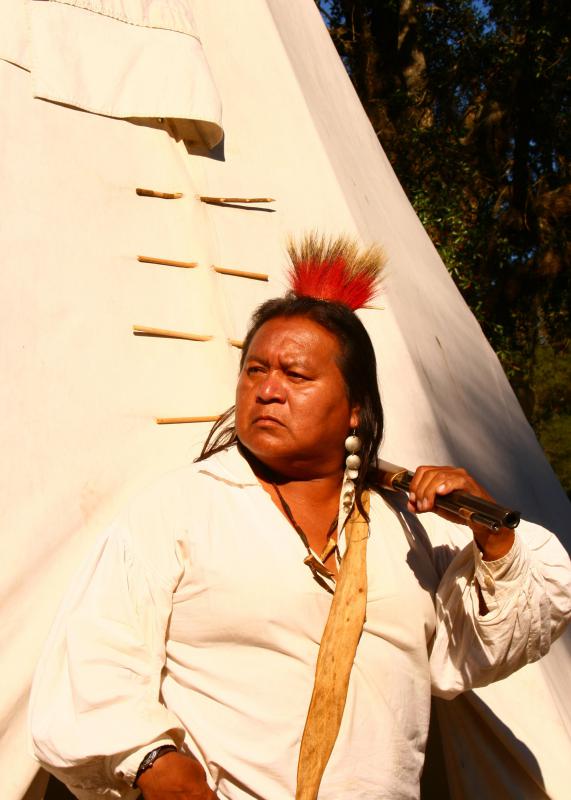At DelightedCooking, we're committed to delivering accurate, trustworthy information. Our expert-authored content is rigorously fact-checked and sourced from credible authorities. Discover how we uphold the highest standards in providing you with reliable knowledge.
Why do We Eat Turkey on Thanksgiving?
The exact menu of the very first Thanksgiving celebration, or more accurately harvest festival, is still a matter of debate among food historians. A letter written twenty-two years after the event suggests the main courses included lobsters, eels, fish and venison, all foods familiar to the native Americans and readily available in that region of North America. One food item conspicuously missing from that first menu is turkey, however. There is written evidence to suggest the governor of the Pilgrims did send men into the field to capture wild fowl, but it is highly likely the hunters brought back smaller birds such as quail, pheasant and duck, not the much larger and more elusive wild turkey. In addition to being a native bird, large birds like the turkey can be symbols of abundance, and the time and effort traditionally required to prepare them means they are often saved for special occasions.
The very first Thanksgiving most likely bore little resemblance to the modern day buffet of turkeys, hams, casseroles and desserts familiar to most Americans. This is not to say the early colonists were not familiar with turkey as a special meal, however. The bird itself is a native of Mexico and the eastern United States, and Spanish traders introduced wild turkeys to Europe during the 16th century. The Pilgrims and other early settlers would have recognized the wild turkey as an exotic game bird, at least.

Some sources suggest that early settlers may have used turkey as a readily available substitute for the traditional goose served on very special occasions in England. The preparation of a large exotic fowl during a three-day harvest festival would not be out of character for English exiles. It is very possible that turkey was served during the second feast of thanksgiving and became a tradition among the early settlers.

The substantial size of a typical domestic turkey may also explain its popularity during Thanksgiving. The underlying theme of the holiday is to acknowledge a wealth of material and spiritual abundance, so the serving of a large and flavorful bird would fit that theme quite well. Much like the Christmas goose or the Easter lamb, a Thanksgiving Day turkey, at least during the time of the Pilgrims, still had an exotic rarity about it. The labor-intensive preparation and long cooking time, also meant that most settlers would have waited until a very special occasion to take on the challenge of serving turkeys. Although modern poultry farming methods have made turkeys much less exotic, preparing a whole turkey on Thanksgiving can be seen as a connection to the bountiful tables of the past.

The wild turkey almost became the national symbol of the United States, if American statesman Benjamin Franklin had prevailed in the debate. Franklin favored the wild turkey over the bald eagle, primarily because it was clearly a native species and possessed a number of strong personality traits Franklin believed defined the American spirit. The bald eagle was viewed as too predatory and ill-tempered by comparison. Wild turkeys are still viewed as formidable foes by small game hunters, unlike their domesticated turkey cousins destined for a spot on the Thanksgiving Day dinner table every fourth Thursday in November.
AS FEATURED ON:
AS FEATURED ON:














Discussion Comments
Stachanov - I don't know what's the right answer, but stuffing did exist at the time, including in England where it was called "dressing" at the time, so it's certainly possible that the first Thanksgiving included a turkey stuffed with stuffing.
What I want to know is how they chose to cook their turkey. Over a open flame right? I wonder what that'd be like.
averagejoe - I certainly don't know for sure but my guess is that that was a later addition.
Anyone know why we eat turkey at holidays -- not just Thanksgiving?
I wonder if turkey stuffing was a big part of the first Thanksgivings? Or maybe that was a later invention?
There were no pheasants at the first Thanksgiving. They were brought to America from China in the late 1899's.
Post your comments